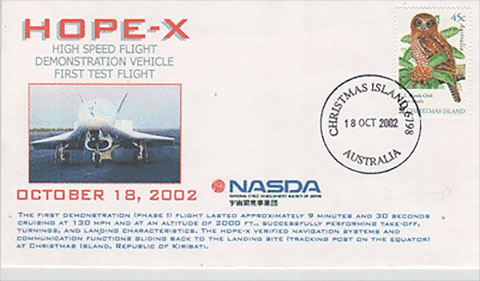Space Cover 789: HOPE Japanese spaceplaneIn the 80’s of the last century, the star project in astronautics were spaceplanes. Each space agency wanted to have its own spaceplane. NASA with shuttles in STS program from 1981 and Russia with Buran with only a flight in November 1988.
But they were not the only ones. Europa began to develop the small spaceplane Hermes, finally cancelled in 1992 but also another country: Japan with HOPE (acronym of H-2 Orbiting PlanE).
HOPE spaceplane should be a space vehicle capable to dock with Freedom space station, later renamed ISS as we all now know it, and transport materials in its unmanned version towards Japanese space module Kibo (also means hope in Japanese) and up to four crew members in its manned version.
HOPE spaceplane was strongly linked with H-II Japanese rocket because it was to be its launcher to space, and after docking and undocking to/from space station, return to Earth horizontally like any airplane.
In order to develop all technologies associated to HOPE spaceplane, NASDA (then Japanese space agency) and NAL (National Aerospace Laboratory of Japan), now both part of current Japanese agency JAXA, approved several projects to go ahead step by step:
- OREX (Orbital REentry EXperiment) to study the materials for the heat shield.
- HIMES (HIghy Maneouvrable Experimental Space vehicle) a scale version dropped from a balloon. Previously to build this scale version several payloads had been already dropped from balloons.
- ALFLEX (Automatic Landing FLifht Experiment) to test the space vehicle in subsonic conditions and landing practice.
- HYFLEX (HYpersonic FLight EXperiment) to study the re-entry phase in hypersonic conditions. In February 1994 an H-II rocket in its maiden space flight was launched from Tanegashima to put in orbit the OREX capsule. See below covers.
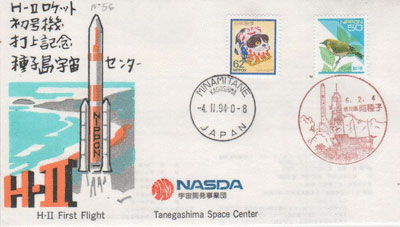
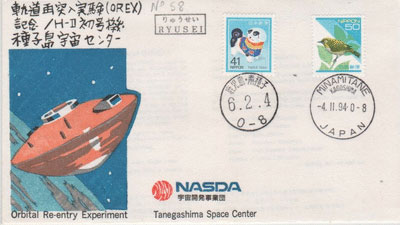
First test of HOPE spaceplane conducted in Uchinoura. No covers known by the author for HIMES scale version conducted in Woomera (Australia).
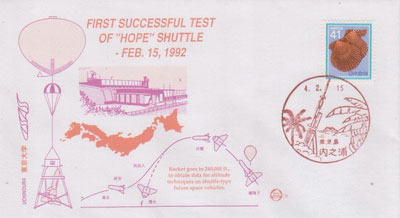
HYFLEX was launched in February 1996 from Tanegashima by a J-I first flight.
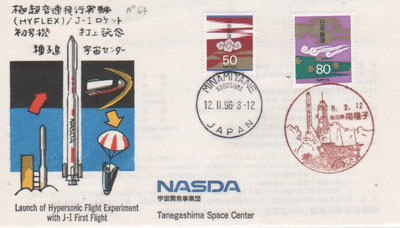
HYFLEX, a lifting-body, followed a suborbital trajectory and landed with parachutes in the Pacific Ocean, where unfortunately it sank.
In 1997 NASDA decided to build a suborbital type, called HOPE-X, to be launched in 2003.
All landing sites in Japan were discarded to avoid low flights over inhabited territories. Several landing tests were conducted in Kiruna (Sweden) and Christmas Island (Kiribati).
First cover of this post shows one of these landing tests conducted in Christmas Island in October 2002.
In a last text in Kiruna in 2003 HOPE-X was seriously damaged and NASDA began to relegate this project in favour of others like HTV, a resupply cargo to space station.
It was the last attempt of Japan to have its own spaceplane before HOPE project was cancelled in 2003.
Additional space covers involving HOPE spaceplane could exist. Please, feel free to post here and comment them. We can all learn something new every day.











